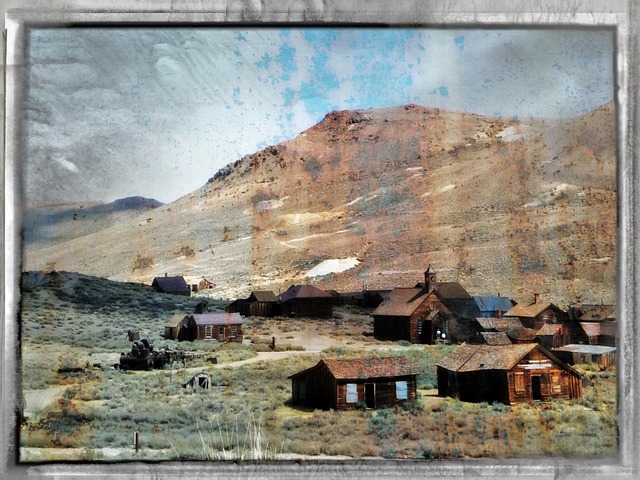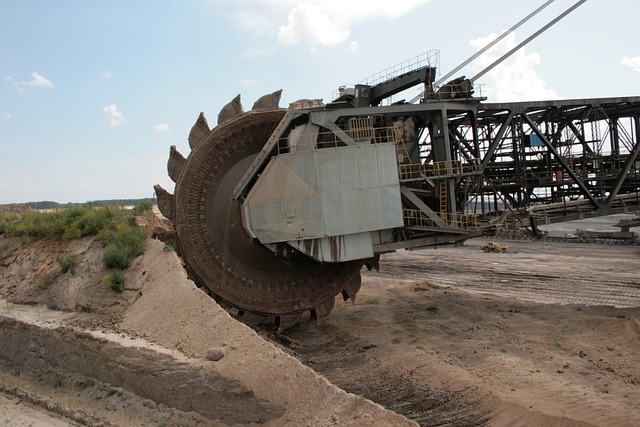In the mid-19th century, Lane County, Oregon experienced a transformative gold mining boom attracting thousands of global prospectors. The discovery of rich gold veins led to the rapid growth of booming towns like Eugene and springfield, with saloons and shops catering to miners. This period left an indelible mark on the county's history, reshaping its landscape from tranquil wilderness into vibrant, economically driven communities fueled by gold rush dreams. Today, visitors can explore historic sites preserving Lane County's rich mining past and discover their own claims in continuation of this legacy.
“Lane County, Oregon, witnessed a dramatic transformation during the mid-19th century gold rush, attracting thousands of prospectors and fueling the rise of bustling boomtowns. This article delves into the vibrant history of gold mining in Lane County, exploring its economic impact and the daily lives of those who sought their fortune. From the initial surge of miners to the eventual shift in economies, we uncover how the legacy of Lane County prospectors continues to shape modern communities, leaving behind a rich tapestry of stories.”
- The Rise of Lane County's Gold Mining Boom
- Life in the Oregon Gold Rush Towns
- Shifting Economies and Mining Claims
- From Boomtowns to Modern Communities: The Legacy of Lane County Prospectors
The Rise of Lane County's Gold Mining Boom

In the mid-19th century, Lane County, Oregon, experienced a transformative gold mining boom that attracted thousands of prospectors from across the country and abroad. The discovery of rich veins of gold in the region’s rivers and streams sparked an economic rush, leading to the rapid growth of several thriving gold rush towns. These towns became bustling hubs where miners gathered to exchange stories, share insights on the best mining claims, and trade goods essential for their treacherous yet rewarding endeavors.
The gold rush brought a surge in population, with Lane County’s landscape shifting from tranquil wilderness to vibrant boomtowns. Mining claims were staked along the rivers, such as the Willamette and McKenzie, creating a network of pathways that connected isolated settlements. The economics of this period was driven by the promise of fortune, with miners investing their time, resources, and hope in the pursuit of gold. This era left an indelible mark on Lane County’s history, shaping its identity as a place where dreams were made and fortunes were forged during Oregon’s remarkable gold rush.
Life in the Oregon Gold Rush Towns

Life in the Oregon Gold Rush Towns was characterized by a unique blend of excitement and hardship. Prospectors from all walks of life, drawn by the promise of riches, poured into Lane County, transforming its landscape and economy. The bustling towns that sprang up around mining claims became the heartbeats of this era, offering a stark contrast to the rural tranquility that once defined the area.
The gold rush economics in Lane County were dynamic but unforgiving. Boomtowns, like Eugene and Springfield, experienced rapid growth as miners arrived en masse, seeking their fortunes. This influx led to a surge in construction projects, with saloons, hotels, and shops popping up to cater to the needs of prospectors. However, the sudden prosperity was often short-lived, as the fickle nature of gold mining left many towns facing economic downturns when the veins tapped out or during periodic market fluctuations.
Shifting Economies and Mining Claims

The gold rush in Lane County, Oregon, brought about significant economic shifts and transformed local communities. Prospectors from near and far flocked to the region, captivated by tales of rich veins and bountiful fields of gold. This influx fueled the growth of several boomtowns, each with its unique character and appeal. The county’s economy shifted towards gold mining, with many residents directly involved in the industry or supporting businesses that catered to miners.
Mining claims became a hot commodity, leading to intense competition and, at times, conflict over the most promising territories. As the rush subsided, some mines closed, but others adapted and diversified. The economic landscape of Lane County was forever changed by this period, with gold mining leaving an indelible mark on its history and shaping the region’s identity as a place where fortunes were made and communities blossomed.
From Boomtowns to Modern Communities: The Legacy of Lane County Prospectors

The Lane County gold rush, a significant event in Oregon’s history, left an indelible mark on the region’s landscape and communities. During this period, the county experienced a rapid transformation from quiet rural settings to bustling boomtowns, each with its own unique character. Prospective miners flocked to Lane County, attracted by the promise of wealth and fortune buried beneath the earth. This influx led to the establishment of numerous mining camps and temporary settlements that sprang up like mushrooms after the rain.
These gold rush towns became the beating hearts of the region’s economy, fostering a vibrant atmosphere with businesses, saloons, and bustling streets. The legacy of Lane County prospectors can still be seen today in the form of historic sites, where visitors can glimpse into the past and understand the challenges and triumphs of those who sought their fortunes. Many have even discovered and staked their own mining claims, carrying on the tradition of exploring the rich mineral resources that made Lane County a hotbed of activity during the Oregon gold rush.
